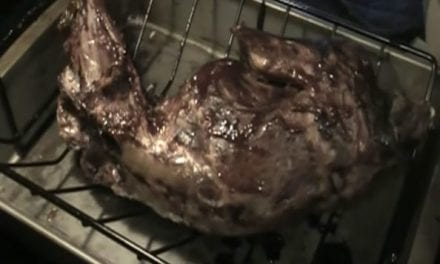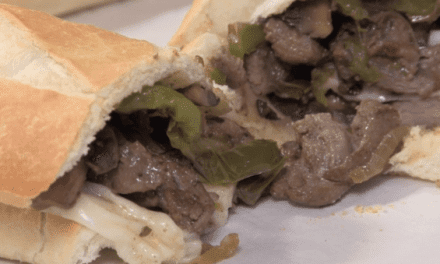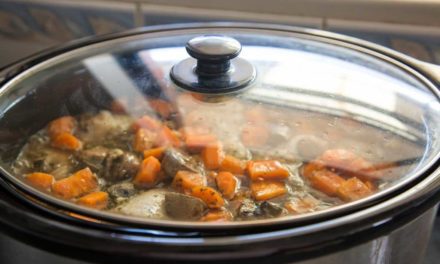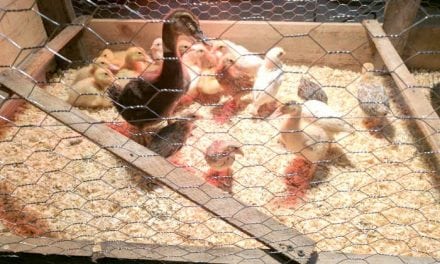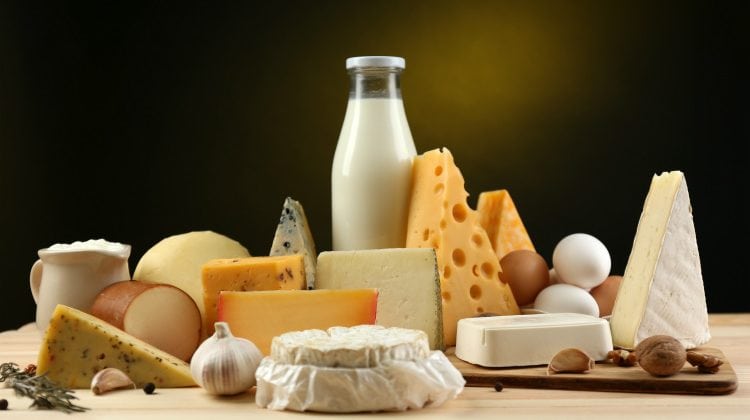
Human beings love dairy. It has been a part of our diet for centuries, and is used in many recipes in many cultures across the globe. Dairy is important to us. In fact, we are actually hardwired to have a weakness for the stuff, genetically programmed to enjoy things like milk and cheese so much they induce a mild opioid effect in the brain. Yeah, you read that right, opioid – we’re literally addicted to the stuff. Casomorphins (protein fragments derived from digesting cheese) are known for their opioid-like effects on the human brain. Cheese addiction is a real thing, and you might be surprised how many of us are affected by it every single day of our lives. So it comes as no surprise that lactose survival may be important in a SHTF scenario. Bear with us on this one.
Lactose Survival – How To Do Dairy

Could you imagine a world without dairy? No milk for your cookies. Cheeseless pizzas. No butter for your toast. Sounds like hell. A hell that many of us might have to live through someday. Because, consider this: in an extended emergency situation (a plague, nuclear winter, social revolt, etc.) the frivolous parts of life will be the first to go. That is to say, anything not necessary for survival will likely become extremely difficult to come by. Especially if it needs refrigeration…
So what do we do? Continue living like savages in a cheeseless apocalypse? Give up on dairy altogether and just relinquish lasagna and ice cream to history? No! I won’t stand for it. And neither should you.
(Unless you are lactose intolerant, in which case you don’t particularly care – but I urge you to KEEP READING. Because, even if you hate everything dairy with all the fibers of your being, there is still an advantage to knowing what I’m about to divulge. Because dairy products might have a lot of economic potential in a post-order world, a lot of capital weight, if you will.)
Unfortunately, the art of dairy is not so easily mastered. Artisan cheese makers and experienced dairy farmers spend years learning and perfecting their trade. Just like any other exercise, practice makes perfect, and you’ll never master anything from reading just a single online article. Things like this take time to get the hang of, and you will probably fail a number of times before you ever experience the creamy taste of success.
That is not to say you shouldn’t understand the basic concepts behind making dairy products. Because, years from now if SHTF and you have to retreat to and live within the wilderness, understanding the basic concepts of making dairy might enable you to become the lactose king-pin of your region. So read on, study up, and try to remember what you learn – it may change your life someday.
How (and What) to Milk
All things dairy start with milk. Now, it doesn’t really matter what you get your milk from so long as it’s fresh when you get it. That means cows, sheep, deer, mares, goats and any other mammal are all viable sources. Which is bizarre and makes you really realize how freaky it is that we collect and consume and enjoy the mother’s milk of different animal species. No other creature on Earth does that… But put that strange thought in the back of your mind, cover it up and forget about it. Just note that different animals produce different tasting milks, which will produce different tasting creams and cheeses.
Whatever you find yourself milking, the concept behind the practice is the same. Pardon me if this next bit gets weird, but that’s the nature of dairy.
- First, get a female mammal.
- Wash your hands.
- Locate the mammal’s teat and give it a good wash too (on a cow this is the udder, it is different on other animals but I’m sure you can figure that out on your own).
- Snap on your latex gloves (if you’ve got some) and grab hold, gently but firmly of the teat.
- Express milk from the teats into a container, making sure you milk each teat evenly.
- Ideally, disinfect the teats when finished. But if you don’t have any teat disinfectant laying around, soft soap and water should do.
And you’re done! You’ve got a container full of mammal milk and you are ready to move along to the next step.
The Next Step: Making Dairy Products
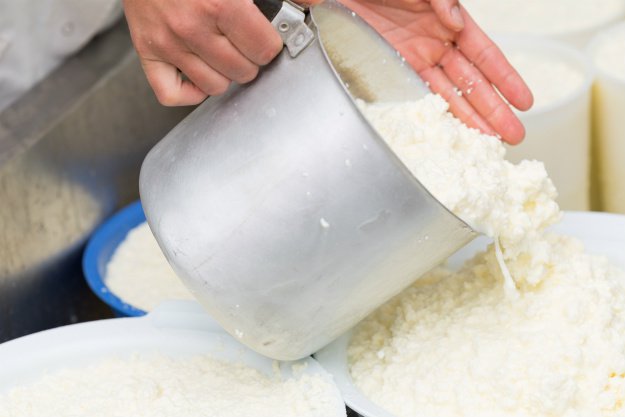
Cheese
- Start with fresh, warm milk.
- Acidify the milk: this is the first decision you have to make. Because there are two distinct ways to acidify milk and they both produce different types of cheese. You could use direct acidification and pour vinegar or citric acid directly into the milk – this will result in cheeses like ricotta and mascarpone. Or you could use cultures or bacteria, to acidify the milk – these cultures will eat up the lactose in the milk and produce lactic acid.
- Add a coagulant: Coagulate is a funny word – it means, “to change to a solid or semi-solid state”. Which is the next thing you need to achieve in your cheese making endeavors. Coagulants can be a number of things, it just needs to have the enzyme “rennet” in it. This can come from within animal stomachs, it can come from the sap of fig trees or milk thistle, or it can come from fungi. You have a number of options here, and while it may seem gross to add the inner mucosa of the fourth stomach chamber of young mammals to your cheese, it is how things need to be done. I’d prefer using fig tree sap, but alas, I do not know where to find fig trees…
- Give it time to congeal. Test the “doneness” by pressing a clean hand against the curd. When it has transformed from a liquid into a gel, it is ready.
- Cut the curd down from one gigantic blob into a number of smaller cubes using a knife. The smaller you make these cubes the drier, and more ageable your cheese will end up. So if you want a very dry cheese that will last a very long time, make a bunch of very fine cubes.
- Stir the curds in the vat for up to an hour. Gently heat the vat as you do so. The longer you stir the drier your cheese will be
- Drain the curds with cheesecloth. Use the porous fabric to strain the cheese of the liquid that has separated from the curds. Let them drain over a colander or sink for 10 minutes and then press the curds to force out any excess fluid.
- Start extracting cheese chunks from the vat. This step is somewhat time sensitive because if you move too slowly the cheese will cool and won’t dry into a wheel properly, likely falling apart. Press the still-warm cheese into wheels (or whatever shape you feel like).
- When the curds have been separated from the whey, you can add salt. At this point you can either choose to eat the cheese right away, or save it to age it.
Cultured Dairy
Cultured dairy produces things like yogurt, cottage cheese and sour cream. Dairies that are cultured are some of my favorites and often contain a lot of probiotics, so knowing how to make these is healthy knowledge.
- Yogurt: This dairy product is relatively unique from other cultured dairy products because it requires a constant source of heat to culture. Culturing is achieved by adding heat and a number of different lactic acid producing thermophilic bacteria – like lactobacillus bulgaricus. Add the starter culture and keep a constant source of heat on the yogurt.
- Cottage cheese:
- Start with raw milk and scrape the cream off the top with a turkey baster (or something similar) and save it in a jar in a cool place for later.
- Pour the skimmed milk into a container and cover with a cheesecloth. Leave this to sit for about 2 days, or until it has achieved a jello-like consistency and there is no watery whey on top. The culture should exhibit signs of whey and curd separation.
- Skim off any leftover cream.
- Take the thickened milk and dump it into a large pot. Put it on a low heat for 5-10 minutes until you can actually see the curds and whey separating.
- Find a bowl and place a CLEAN dishcloth over it, pour the curds onto the cloth and allow them to strain for up to 5 hours.
- When finished, take curds off of the cloth and place into a bowl. Add salt to taste, and pour ¼ of the leftover cream over the top and mix well.
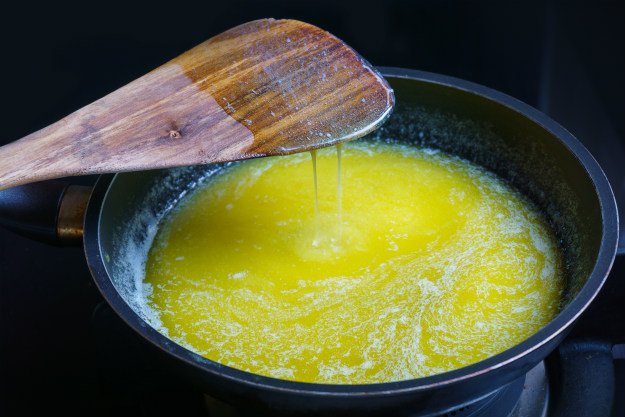
Butter
Ohhhh, ho ho, butter. If dog’s weren’t already man’s best friend, you surely would be. Butter goes well with just about everything, and is one of the greatest treats one can have in a survival situation. Here is a quick version of the old churning method:
- Scrape the cream off the top of fresh milk and pour it into a jar, which you can screw a lid onto.
- Shake the jar vigorously until butter starts to form from the cream into a soft lump, separated from the liquid buttermilk.
- Pour the contents into a fine mesh strainer to get rid of the unwanted buttermilk. You will be left with solid butter, which can be salted to taste and refrigerated for later use.
A Dairy Economy
Today if you want milk or butter or ice cream or cheese you just go to the grocery store and buy it. But that kind of easy access to dairy won’t always be so readily available to us. If things start to go really south to the point where electricity is out for extended periods of time, or to the point where grocery delivery trucks stop delivering, or dairy farmers stop farming dairy, dairy products are going to become a rarity. Their value will elevate to become an exceptionally precious resource for trade and cooperation. And they taste good, which is also very nice.
Maybe someday you become the dairy tycoon of a post-apocalyptic world. Maybe not. Either way, understanding how to make something humans have such a severe weakness for is valuable knowledge. So know how to do dairy. It isn’t rocket science, humans have been doing it for thousands of years with less equipment and technology than you’ll probably ever have.
That isn’t to say it’s easy. Making dairy products like those described above all on your own will be an endeavor of trial and error and effort – just like anything worthwhile. But mastering the art of dairy will feed the dairy addiction within you and those around you. And who knows, maybe you use it to become the post-apocalyptic champion of cheese commerce. What more could anyone really want?
Up Next: Emergency Survival Kit From Everyday Household Items
Did you enjoy our post on Lactose Survival? Let us know in the comment section below!
For awesome survival gear you can’t make at home, check out the Survival Life Store!
Looking for some basic cheese making supplies? Check out these options:
- If you want an inclusive cheese making kit, give the Standing Stone Farms Basic Beginner Cheese Making Kit a try!
- If you want to read more on the subject, try Home Cheese Making: Recipes for 75 Homemade Cheeses
- If you’re just in need of a basic Cheesecloth, then then this is for you.












